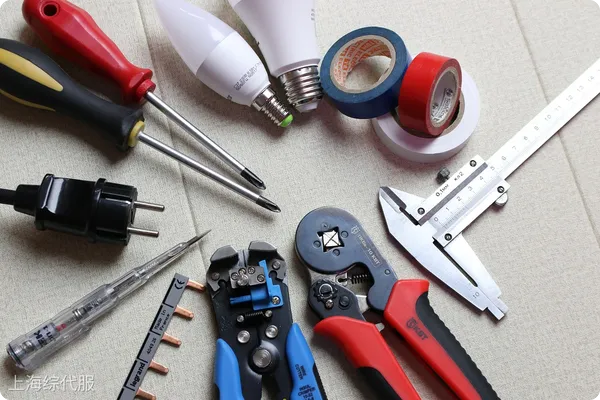The United States is an important consumer market for hand tools, and its tool market growth rate is nearly two percentage points higher than the global level. In 2023, the annual per capita consumption of hand tools in the United States reached $164, far exceeding the global average. In the future, with the continued advancement of infrastructure construction in the United States and the prosperous development of the DIY market, the demand for hand tools in the US market is expected to maintain a steady growth trend. The following are the hand toolsExport to the United StatesThe complete process and compliance points.

Export Process for Manual Tools to the U.S.
Preliminary preparation
- Market Research: Gain a deep understanding of the U.S. manual tools market, including demand characteristics, competitive dynamics, and target customer preferences, to achieve accurate product positioning.
- Select Reliable Suppliers: Choose suppliers with stable production capacity, robust quality control, and flexible supply solutions.
Choice of Transportation Mode
- Sea Freight: Suitable for large-volume, heavy manual tools. It offers lower transportation costs and high cargo capacity. The transit time ranges from 15–25 days to West Coast ports and 25–35 days to East Coast ports from major Chinese ports.
- Air Freight: Fast and ideal for urgent orders or small, high-value tools. Transit time to major U.S. airports is typically 1–3 days, but air freight is significantly more expensive than sea freight.
- International Express: Convenient for small samples or emergency replenishments, offering door-to-door pickup and delivery services.
Customs Declaration
Prepare Declaration Documents:
- Commercial Invoice: Details the product name, quantity, unit price, total price, and country of origin, serving as the basis for customs valuation and duty calculation.
- Packing List: Specifies the contents of each package, including product type, quantity, weight, and dimensions.
- Customs Power of Attorney: Required if a customs broker is authorized to handle the declaration on behalf of the exporter.
- Certificate of Origin: Demonstrates the product’s origin and may qualify for tariff reductions under applicable trade agreements, such as the China-U.S. Free Trade Agreement.
Declaration Process: Submit the customs declaration electronically or via paper, ensuring accurate and truthful information. Customs may inspect the goods to verify the declarations accuracy and ensure compliance. Prepare additional documentation for products subject to special regulatory conditions, such as environmental certifications for specific materials.
Shipping Arrangements
- Select Freight Forwarders: Partner with experienced, reputable freight forwarders familiar with international shipping processes. They can provide logistics solutions, including booking space, tracking shipments, and resolving transit issues.
- Track Shipments: Monitor cargo movements through tracking systems to ensure timely and safe delivery to U.S. destinations.

Certifications and Regulations
FCC certification
- Applicability: Required for manual tools with electronic components or wireless communication functions, ensuring electromagnetic compatibility and safe radiofrequency emissions.
- Application Process:
- Determine certification type: Certification (FCC ID), Declaration of Conformity (DoC), or Verification of Conformity (VOC). Most tools with electronic components require Certification (FCC ID).
- Prepare samples and documents: Submit test samples and technical documents, such as schematics, PCB layouts, BOM lists, product manuals, and performance descriptions, in English.
- Laboratory Testing: Accredited labs test products against FCC standards for electromagnetic radiation and interference.
- Review and Certification: Test data is reviewed, and certification is granted if approved.
FDA Certification (if applicable)
- Applicability: Required for manual tools used in medical applications, such as surgical instruments, to ensure compliance with U.S. medical device regulations and safety standards.
- Application Process:
- Determine classification: Identify the tool’s category under FDA’s medical device classification.
- Prepare documentation: Include product descriptions, schematics, performance data, and safety testing results.
- Submit application: For non-exempt devices, submit a 510(k) application demonstrating safety and efficacy.
- Review and approval: FDA reviews the application materials, including administrative review and technical review. After passing the review, the company will obtain the corresponding certification license and the product can be legally sold in the US market.
UL Certification (optional)
- Applicability: Relevant for power tools, emphasizing electrical safety and performance. While not mandatory, UL certification enhances consumer trust and market competitiveness.
- Application Process:
- Submit materials: Provide technical details, diagrams, and samples.
- Testing and factory inspection: UL conducts product testing and initial factory inspections.
- Certification: Successful applicants can use the UL mark.
- Other regulations: The U.S. Consumer Product Safety Commission (CPSC) has a series of safety regulations and standards for consumer products imported into the United States. As consumer products, hand tools need to comply with relevant safety requirements, such as restrictions on harmful substances such as lead content.

Packaging Requirements
- Basic Requirements: Packaging must be durable, complete, and lightweight, preventing damage during transit. It should be clean, dry, odor-free, and devoid of protruding nails or hooks.
- Moisture and Rust Protection: Given the metal composition of manual tools, packaging should protect against moisture and rust. Options include desiccants and moisture-resistant materials like plastic films.
- Labeling: Clearly display product name, model, quantity, weight, and volume. Include warnings like “Fragile” and “Keep Dry.” Wooden packaging must comply with ISPM 15 standards, including fumigation and IPPC marking.
Conclusion
When exporting manual tools to the U.S., businesses must adhere to these processes, ensuring products meet all certifications and regulations while maintaining high packaging standards. Compliance reduces trade risks and enables sustained success in the competitive U.S. market. For further assistance, feel free to contact Zongdai Service!


 Follow customer service WeChat
Follow customer service WeChat